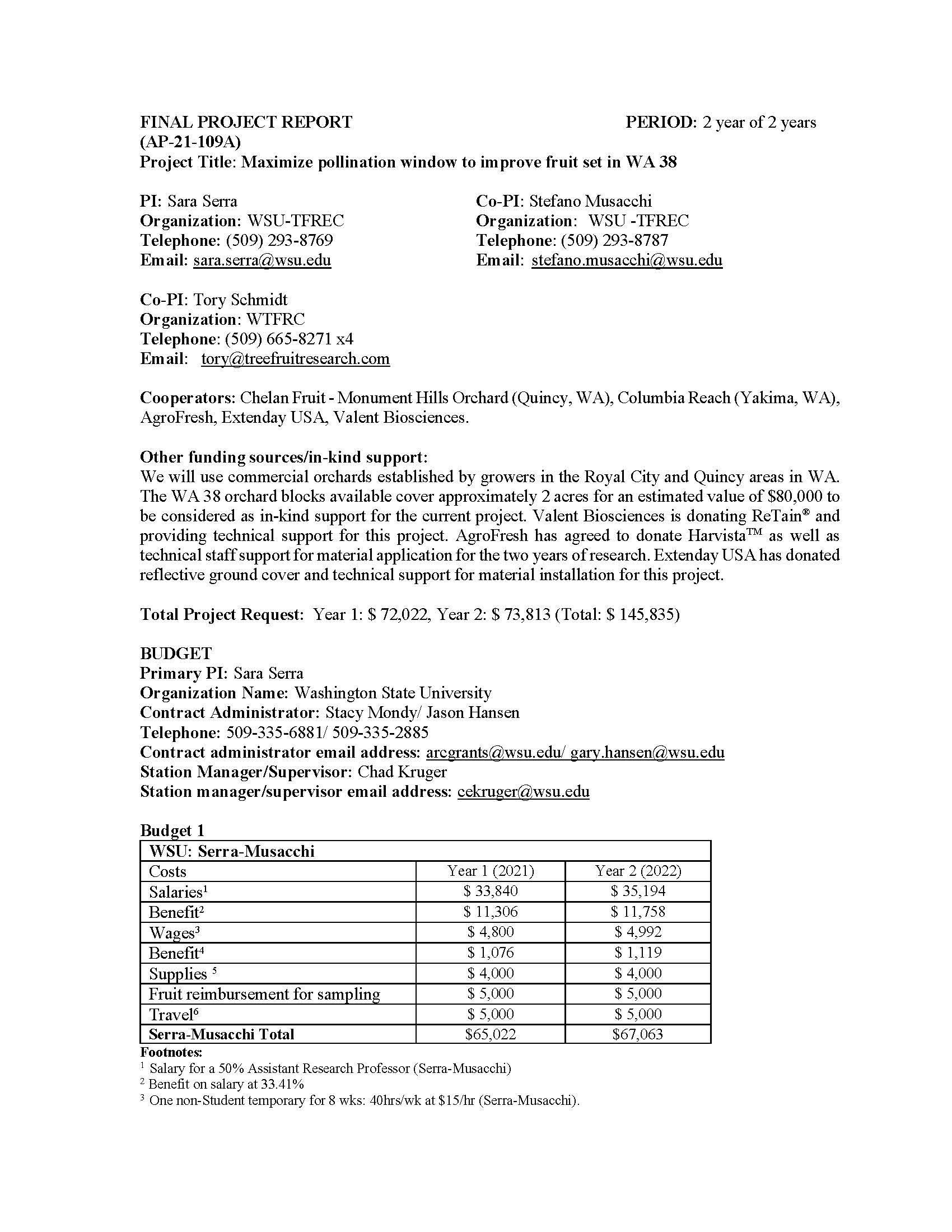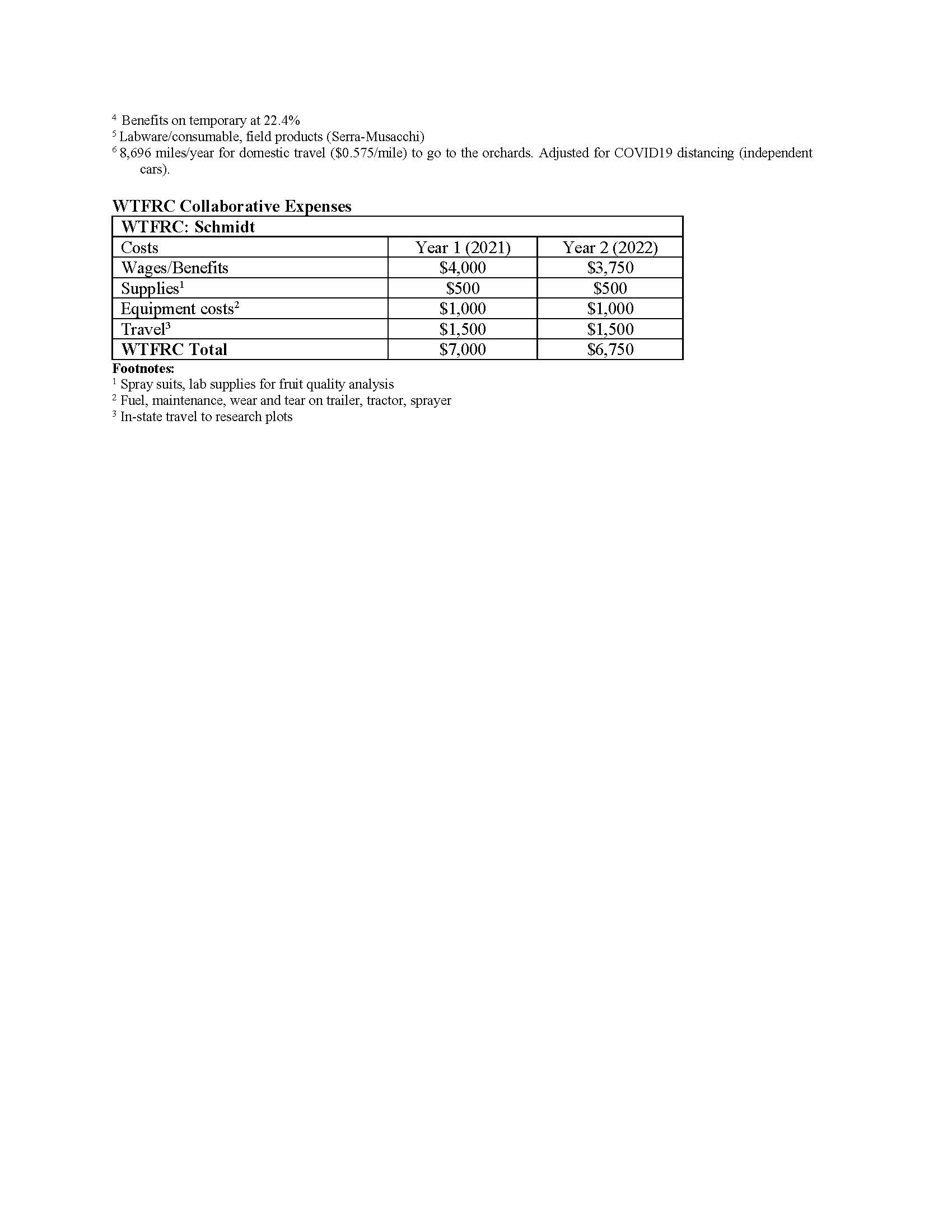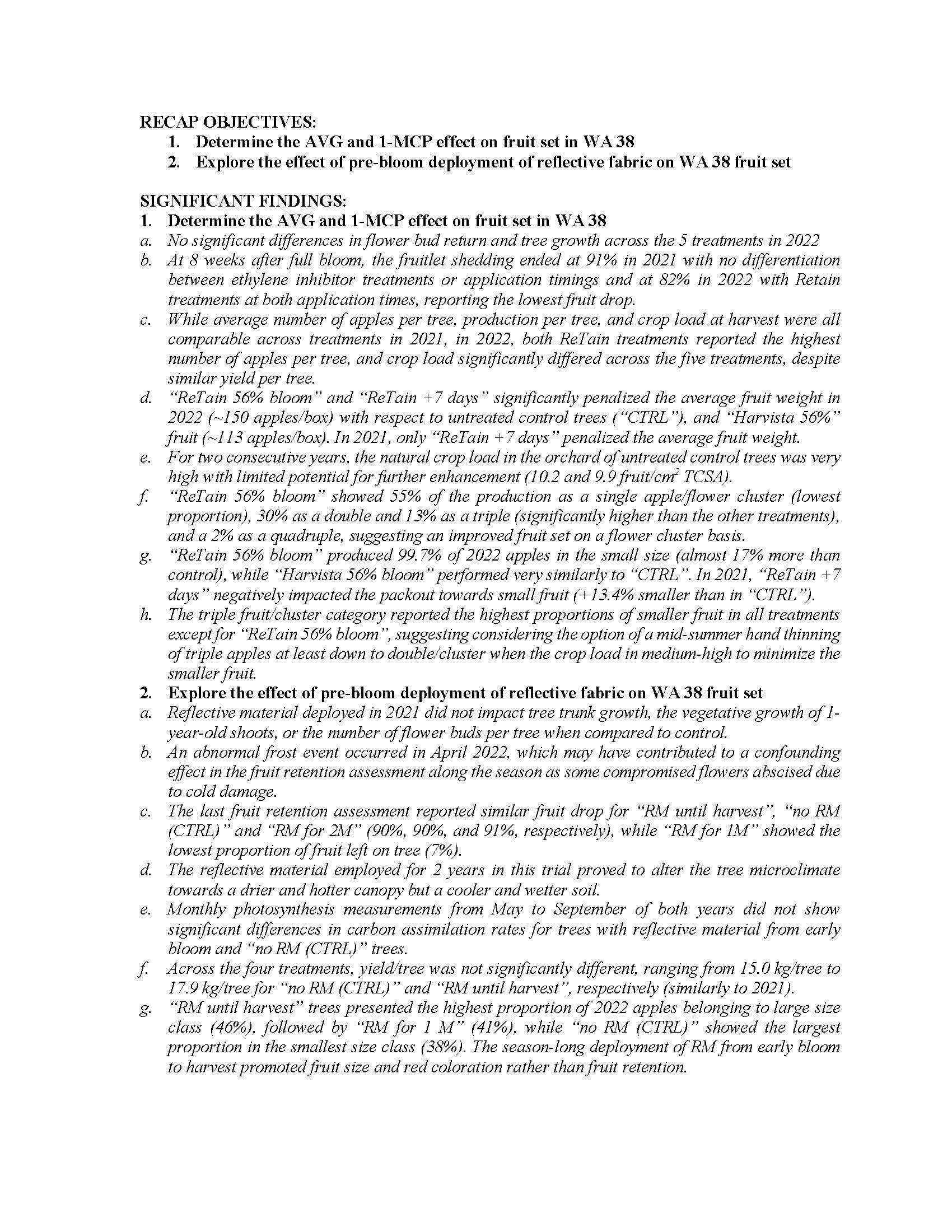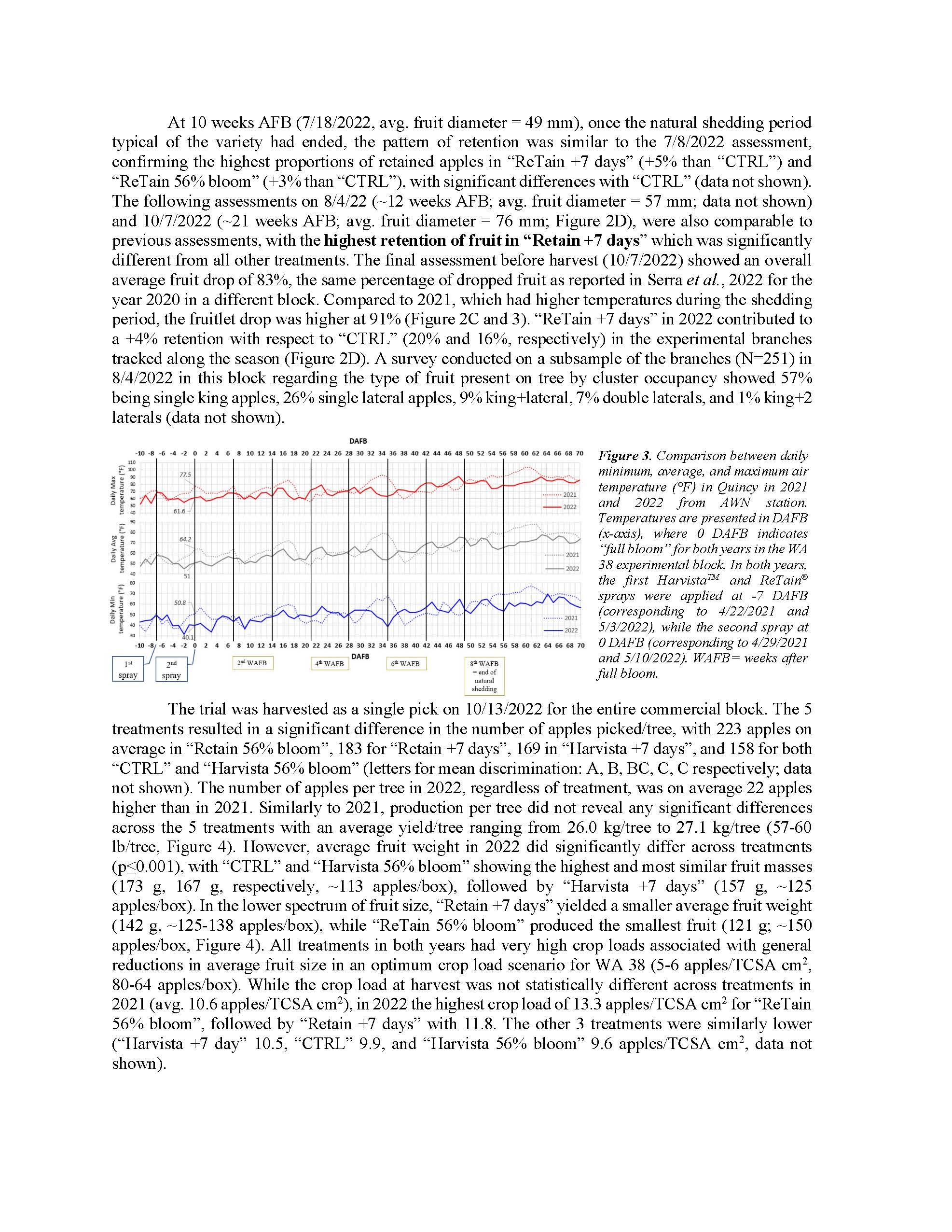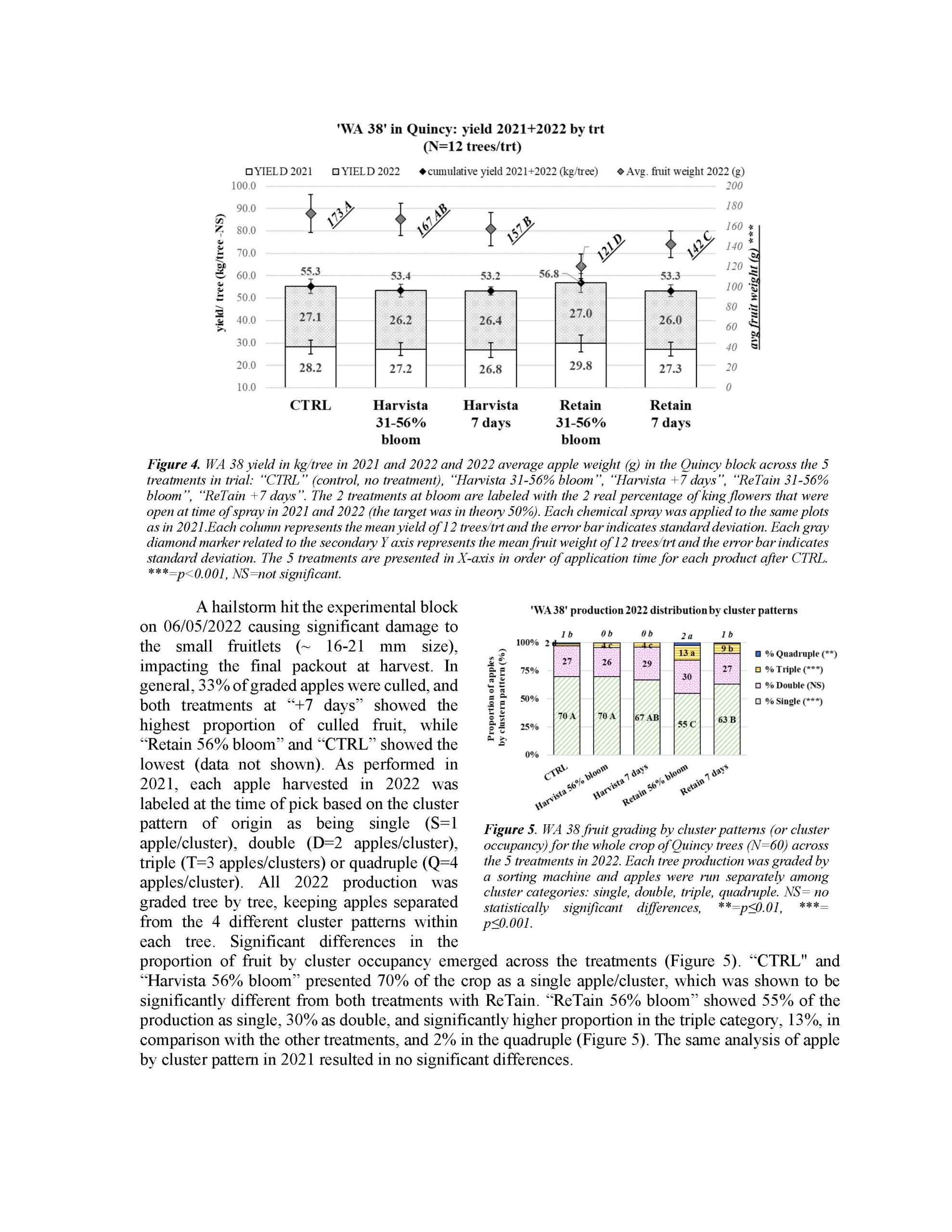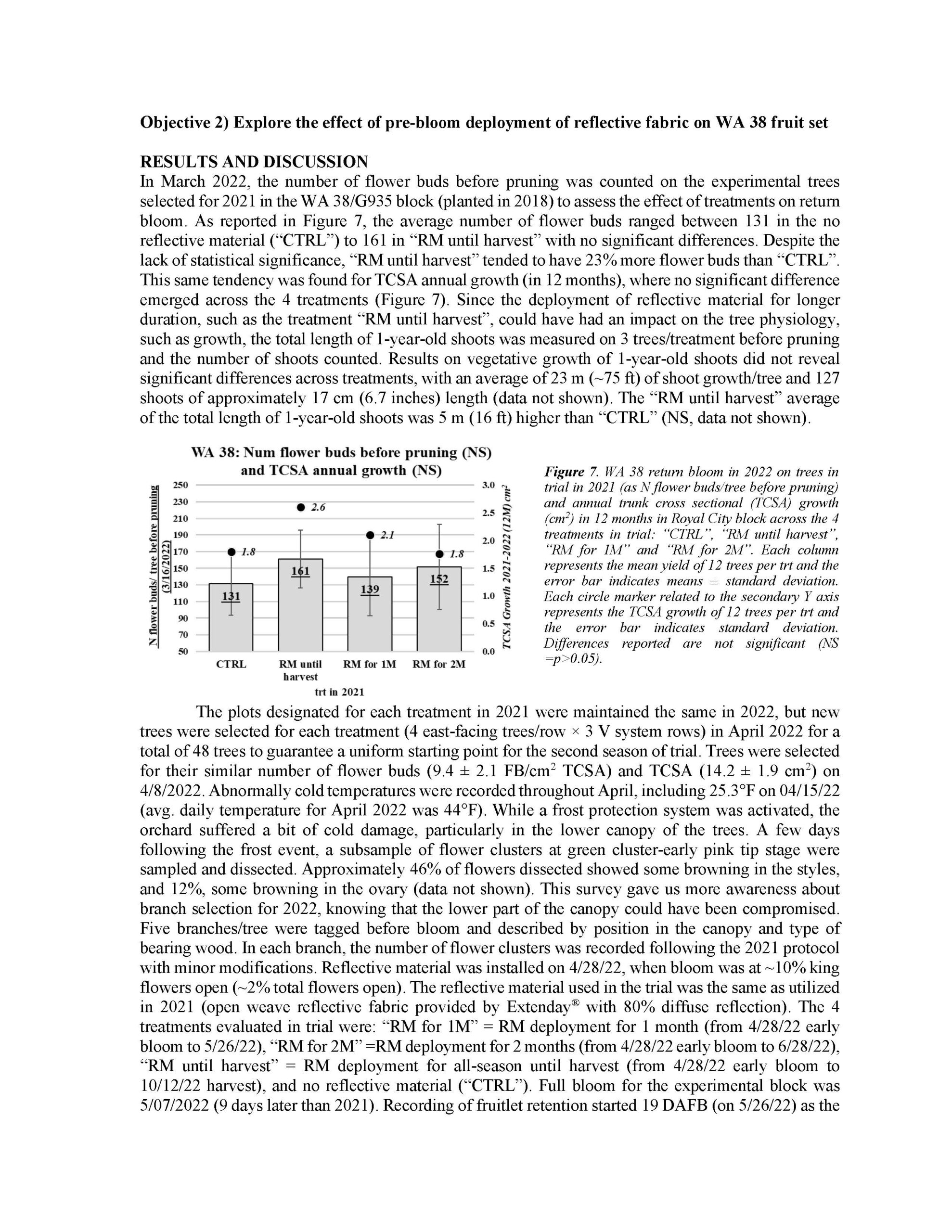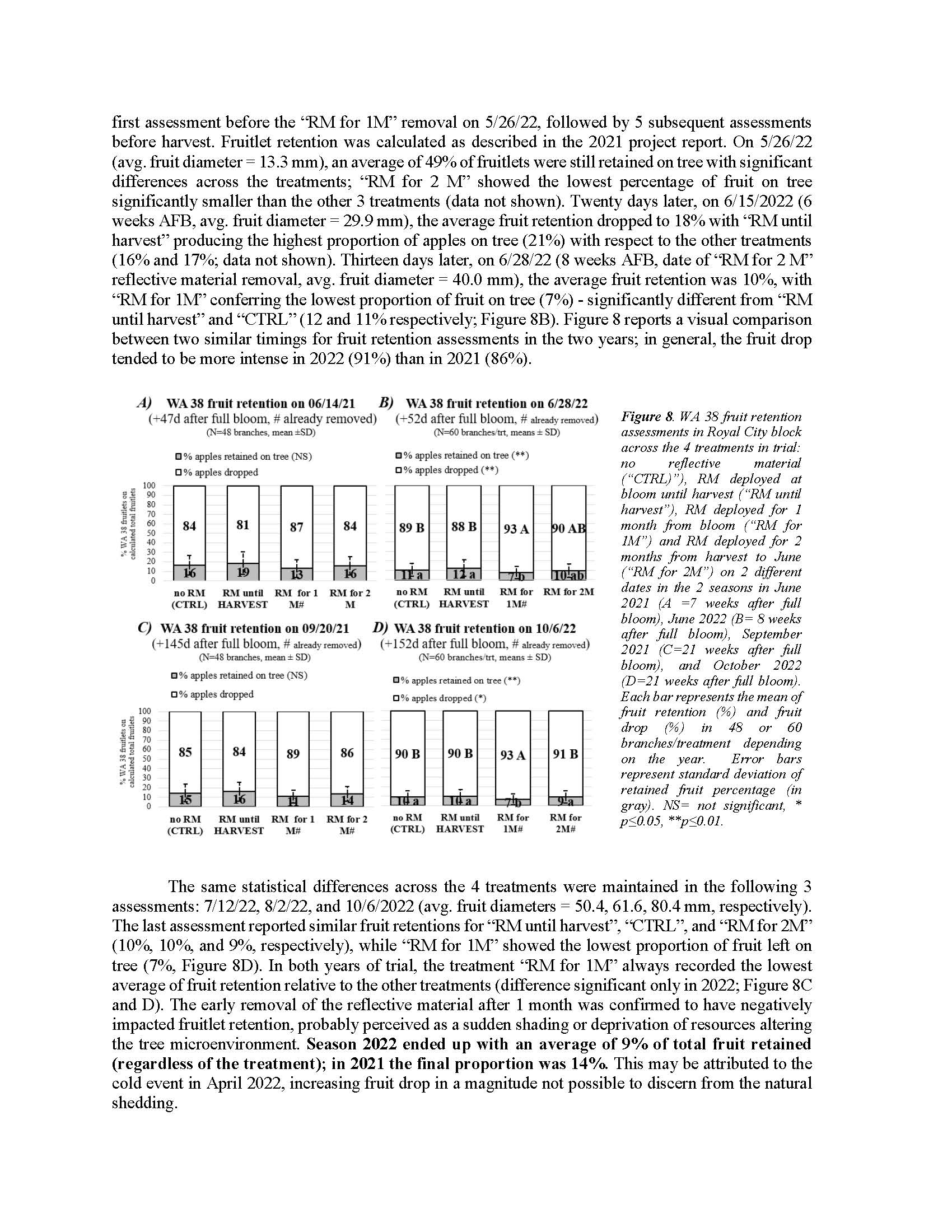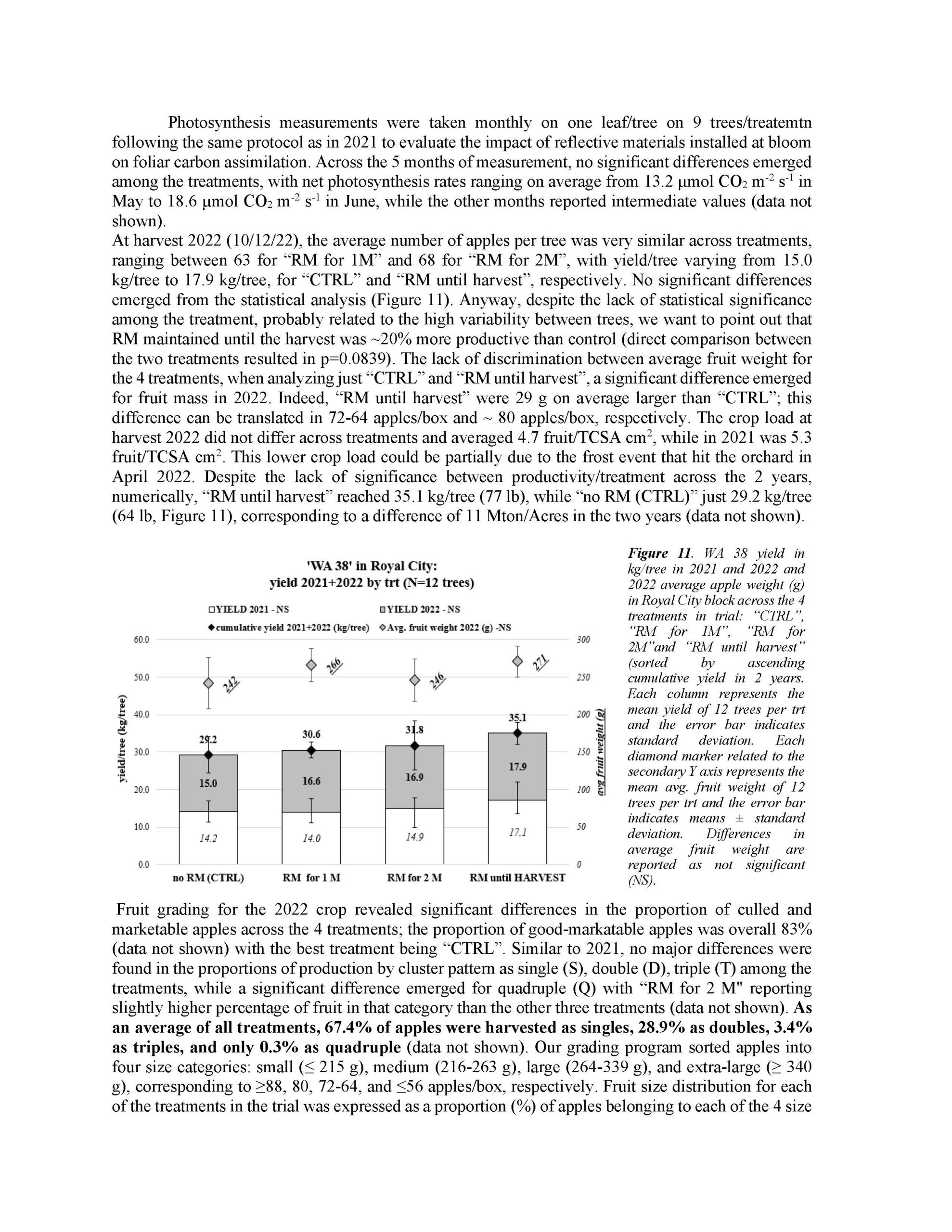Maximize pollination window to improve fruit set in WA 38
Author: Sara Serra
Published: 2023
Summary: WA 38 is demonstrated to be a variety with abundant and prolonged bloom, though these characteristics do not necessarily translate to a satisfactory fruit set. The variety is self-thinning, naturally abscising 83-91% of fruitlets within 8 weeks from bloom. Some historical data on pilot trials reported inconsistencies in annual yield. Based on these aspects, the present project aimed to maximize WA 38 fruit set by testing different ethylene regulators and reflective material applications to manage post-bloom fruit drop. The first approach explored was the adoption of ethylene inhibitors to disrupt ethylene signaling at bloom. We tested AVG (ReTain®) and 1-MCP (HarvistaTM) at different timings in bloom to determine their effectiveness in improving WA 38 fruit set. Their mode of action is different: 1) AVG blocks ethylene biosynthesis, while 2) 1-MCP reduces ethylene receptor sensitivity – both with the effect of reducing fruit senescence initiated by ethylene. Because the timing of these applications can be critical in influencing the fruit set, we tested an early bloom application (~50 % king bloom) and another application 7 days later (+7 days, petal fall). The two phenological stages of application could delay the beginning of natural floral senescence, extending the pollination period (~50 % king bloom) and reducing the ethylene signaling responsible for early green fruitlet drop (+7 days, petal fall). The natural WA 38 crop load of the experimental block was ~10 fruit/ TCSA cm2 across two consecutive years (2021 and 2022) with no artificial pollination implemented. This scenario limited the understanding of the full potential of applying both ethylene inhibitors due to a high fruit set already established naturally (recommended crop load of WA 38 is ~ 5-6 fruit/ TCSA cm2). In the second year of the trial, both treatments with Retain showed the highest number of fruit/tree and crop load but similar yield with respect to the control (no ethylene inhibitor). This increased fruit number corresponded to a less desirable average fruit weight for both Retain treatments with an average size equal to 138-150 apples/box (control was, on average 113 apples/box). Harvista applied at bloom reported similar performances as control with a slight decrease in fruit size. The second approach studied in this project investigated the magnitude of fruitlet abscission driven by competition between fruitlets, where the ones dropping precociously are those with a lower sink strength demonstrated by decreased growth rate. For this aspect, we utilized reflective material deployed at early bloom (<30% king open) in the orchard inter-rows with the aim to increase diffuse light in the canopy to increase carbon assimilation and photosynthate availability to support greater fruitlet retention. The reflective material was tested for 3 deployment durations from early bloom (1 month, 2 months, and until harvest, ~5 months). No significant improvement in either photosynthetic assimilation rate or fruit set was recorded in the two trial years across any reflective material applications concerning untreated control. RM maintained until harvest increased by 20% yield compared to the control, despite this difference resulted not statistically significant. However, we demonstrated that the reflective material utilized in the study did modify the tree microclimate towards a drier and hotter canopy but a cooler and wetter soil. The warmer canopies during bloom could have negatively impacted the flower longevity without gaining any benefit from an enhanced light environment to mitigate fruitlet competition. The season-long deployment of reflective material from early bloom to harvest did, however, result in improved fruit size and red coloration.
Keywords:

